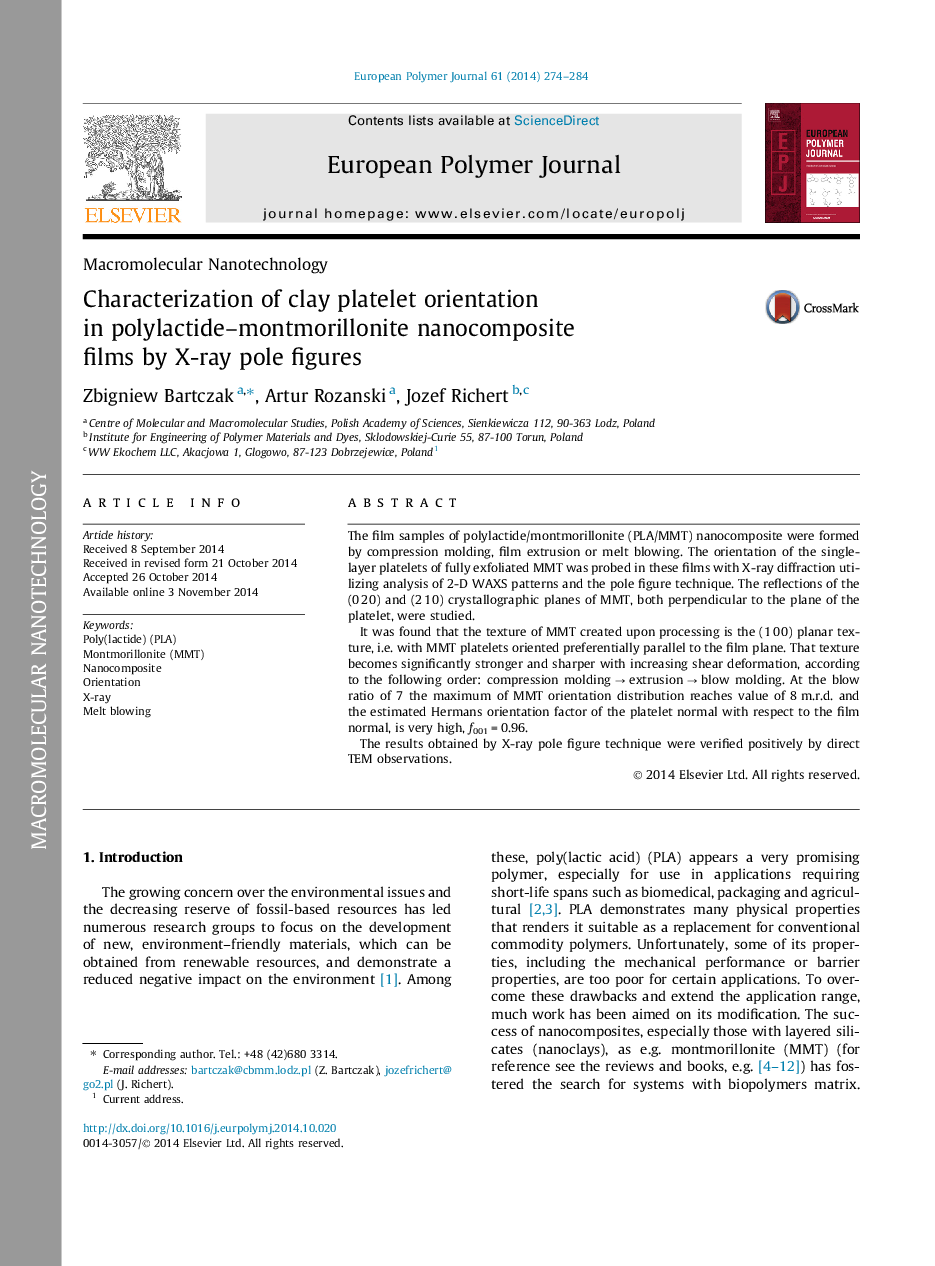| Article ID | Journal | Published Year | Pages | File Type |
|---|---|---|---|---|
| 1397996 | European Polymer Journal | 2014 | 11 Pages |
•X-ray pole figure technique was applied to study orientation of clay in PLA/MMT films.•(0 2 0) and (2 1 0) diffraction peaks of MMT were used for orientation study.•Clear (0 0 1) in-plane texture of MMT platelets was found.•Texture strength increases with increasing shear imposed upon film forming.•The sharpest texture found in blow molded films, f001=0.96.
The film samples of polylactide/montmorillonite (PLA/MMT) nanocomposite were formed by compression molding, film extrusion or melt blowing. The orientation of the single-layer platelets of fully exfoliated MMT was probed in these films with X-ray diffraction utilizing analysis of 2-D WAXS patterns and the pole figure technique. The reflections of the (0 2 0) and (2 1 0) crystallographic planes of MMT, both perpendicular to the plane of the platelet, were studied.It was found that the texture of MMT created upon processing is the (1 0 0) planar texture, i.e. with MMT platelets oriented preferentially parallel to the film plane. That texture becomes significantly stronger and sharper with increasing shear deformation, according to the following order: compression molding → extrusion → blow molding. At the blow ratio of 7 the maximum of MMT orientation distribution reaches value of 8 m.r.d. and the estimated Hermans orientation factor of the platelet normal with respect to the film normal, is very high, f001 = 0.96.The results obtained by X-ray pole figure technique were verified positively by direct TEM observations.
Graphical abstractFigure optionsDownload full-size imageDownload as PowerPoint slide
